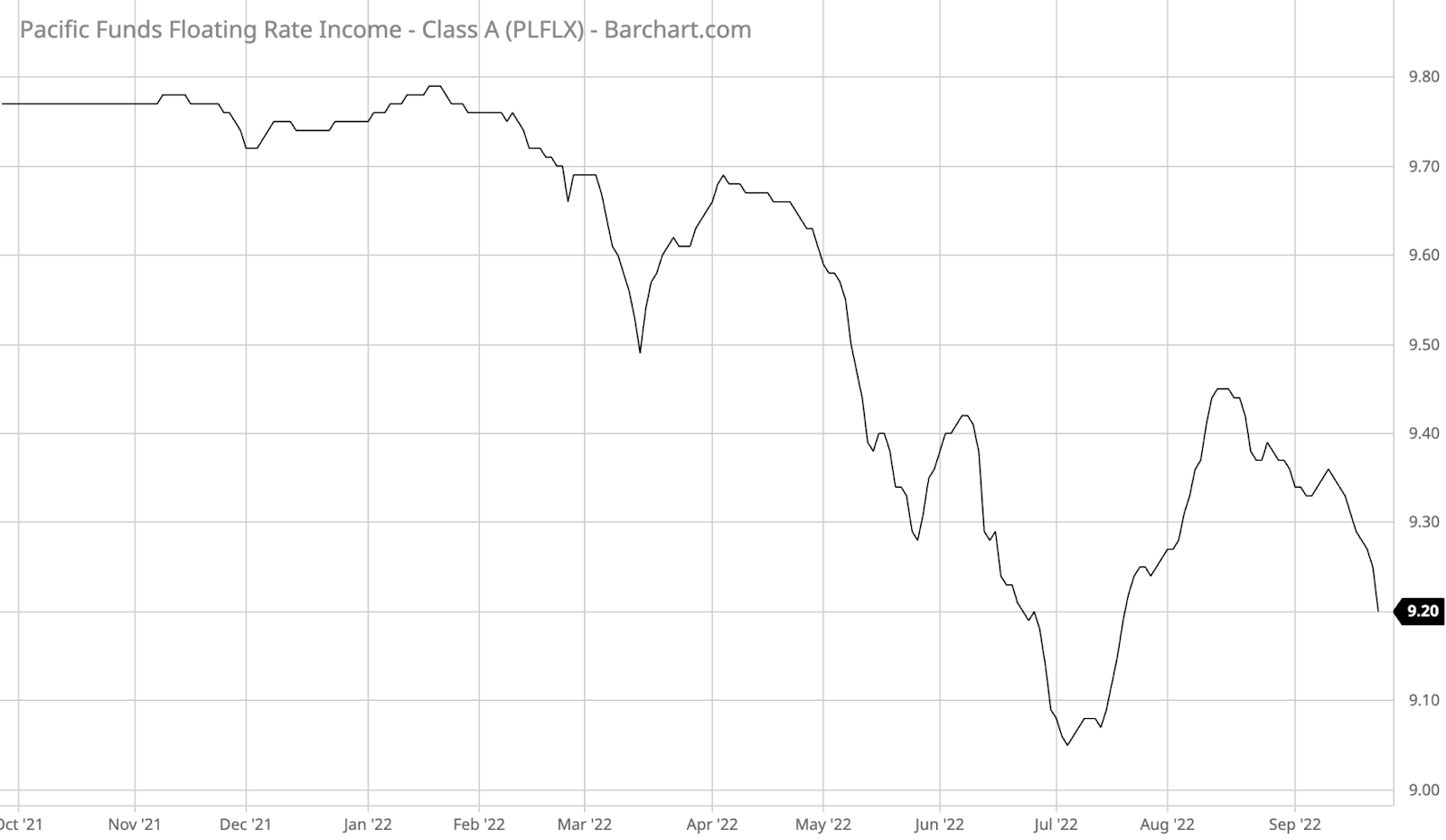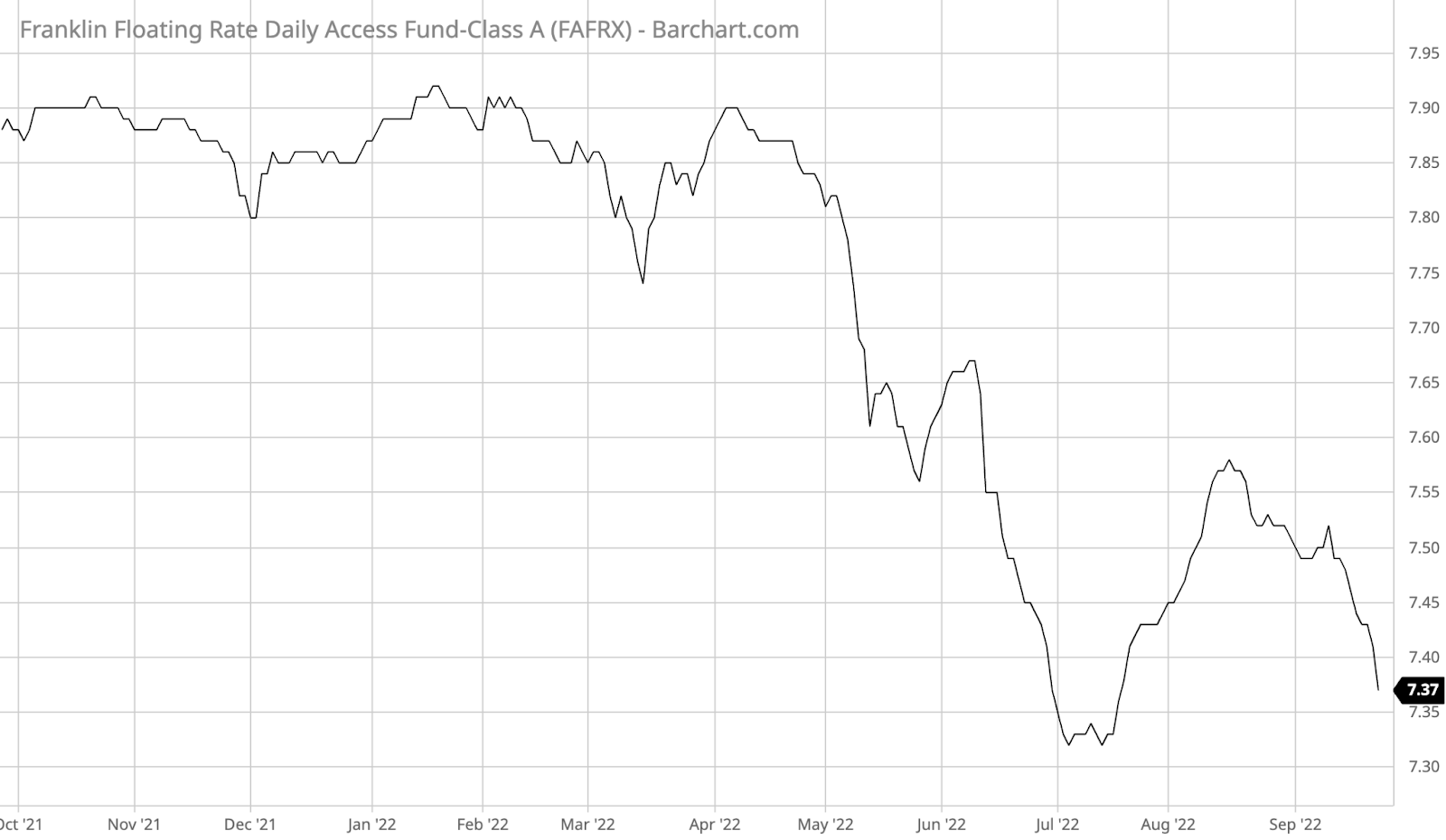First, we select the top trending category from more than 200 categories listed on MutualFunds.com based on the percentage increase in monthly viewership. Then, we choose the top three funds with the highest one-year trailing total returns from the top trending category. To ensure funds’ quality and staying power, we only look at those mutual funds with a minimum of $100 million in assets and a track record of at least three years. We also remove those mutual funds closed to new investors and unavailable for investment outside registered accounts such as retirement or 529.
In this edition, we look closely at trending Bank Loan Funds for investors.
Bank loan funds holding floating rate securities have a shorter duration than conventional bonds, enabling investors to capitalize on (and hedge against) rising interest rates. However, less creditworthy issuers also translate to more significant default risks than blue-chip bonds. As a result, many investors look to hold these funds during rising rate environments when the economy isn’t in substantial danger.
Be sure to check out the Bank Loan Funds page to find out more about the other funds in this category as well.
Trending Funds
The Invesco Senior Floating Rate Fund (OOSAX) comes in first place on this week’s list, with a 0.86% loss over the trailing 12-month period. With a 1.01% expense ratio and a 4.99% yield, the fund offers the best performance and the highest yield.
The fund aims to generate current income by investing in a portfolio of senior loans. With more holdings and a less concentrated portfolio than its peers on this week’s list, the fund managers seem to focus on broad exposure to floating rate securities.
The fund’s portfolio consists of 593 securities, with no single holding accounting for more than 1% of the portfolio. As with most bank loan funds, the portfolio includes BB-rated and lower assets, although it holds more sub-B-rated securities than the category average. As a result, investors could see higher yields but also higher risk.
Want to know more about portfolio rebalancing? Click here.

Source: Barchart.com.
2. Pacific Funds Floating Rate Income Fund (PLFLX)
The Pacific Funds Floating Rate Income Fund (PLFLX) comes in second place with a 1.30% decline over the trailing 12 months. With a 1.02% expense ratio and 4.12% yield, the fund has the highest expense ratio and the lowest yield.
The fund aims to generate current income by investing in float rate securities. But unlike its competitors, the fund managers identify larger and more liquid issuers while holding positions in less than 10% of the benchmark issuers. As a result, the fund aims to provide better downside risk protection and a wider margin of safety.
The fund’s portfolio includes exposure to over 160 different issues, concentrated in the information technology (18.08%), healthcare (16.03%), and financial (9.75%) sectors. Meanwhile, the securities in its portfolio are largely B-rated (72.52%), with a 10.21% allocation toward CCC or below-rated assets, which is on par with other bank loan funds.
Find funds suitable for your portfolio using our free Fund Screener.

Source: Barchart.com.
3. Franklin Floating Rate Daily Access Fund (FAFRX)
The Franklin Floating Rate Daily Access Fund (FAFRX) rounds out the list with a 1.88% drop over the trailing 12-month period. The fund is the lowest-cost option on this week’s list, with a 1.00% expense ratio and a 4.24% yield.
The fund seeks a high level of current income and capital preservation by investing in senior floating rate loans and corporate debt securities. While its portfolio is similar in size to PLFLX, the fund has less exposure to below-B assets, meaning it could be a safer option.
The fund holds a portfolio of 301 securities concentrated in healthcare (14.15%), technology (13.19%), and services (8.70%). Most of these securities (73.03%) have a B rating, although the rest of the portfolio consists of higher-rated assets, with 10% in BB-rated securities.

Source: Barchart.com.
Learn more about different Portfolio Management concepts here.
The Bottom Line
Want to generate high income without undertaking too much risk? Check out our complete Best High Dividend Model Portfolio.
NOTE: Trailing 1-year total returns as of September 22, 2022.

